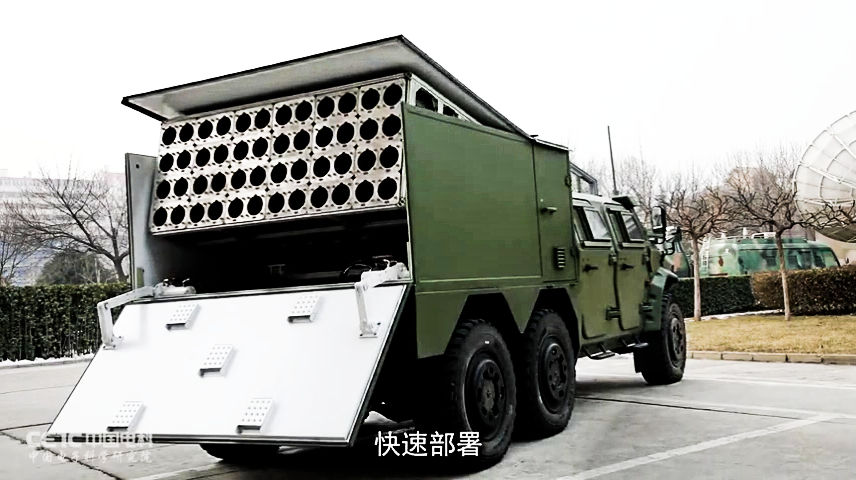Amid reports of China amassing stealth as well as “hypersonic” drones near the Indian border, a Hollywood action-thriller predicts the dominance of swarm drones in future warfare.
India’s Latest Agni-P Ballistic Missile Sparks A Fierce Debate Between Chinese & Indian Experts
Released in 2019, Angel Has Fallen depicted a scene in which the US President faces a swarm of drones in the middle of a river.
The plot of the action-thriller movie, the third installment of a trilogy, revolves around a drone attack on the President of the United States, played by actor Morgan Freeman, which is being maliciously blamed on the protagonist.
To protect the President against the swarm drone attack, secret service agent Mike Banning, played by actor Gerald Butler, and his team fire indiscriminately with machine guns and handguns against the incoming armed drones, which seem to have a “fire, forget and find” capability.
The drones shown in the film seem to be autonomous, which use artificial intelligence (AI) to identify the target — in this case, Butler’s teammates — and destroy them with a “hard kill”, using an armed firing weapon, without any human assistance.
It is shown that a human operator aborts the mission of opening fire on Banning when the drone swarm moves closer to his boat in order to target him. Due to the abort instruction, the drones simply fly overhead the agent and attack the other personnel present there.
This might be a movie scene but with advancements in military technology, the idea of killer robots is increasingly shifting from reel to real life.
Autonomous Drones
In March, a UN report cited the possibility of the use of such autonomous drones with a “mind of their own” in the ongoing Libyan conflict. Known as the lethal autonomous weapons system (LAWS), the report said that Kargu-2 drones developed by STM, a Turkish state-owned defense company, might have attacked soldiers in March 2020.
The drone-manufacturer STM, however, denied the use of autonomous technology to attack targets, saying “a manual operator” has to press a button to launch an attack.
The movie’s production team reportedly thinks that such an assassination attempt or atacks, as shown in the movie, is quite possible in view of current technology, as reported by Military.com.
They aren’t entirely wrong since Iran has lost two eminent people to drone strikes. In January 2020, the country’s top Iranian general Qassem Soleimani was killed in a US drone strike just off Baghdad airport in Iraq.
Later that year, in November, the founder of Iran’s nuclear program, Mohsen Fakhrizadeh was reportedly killed by “a remote-controlled” weapon, according to Iranian assessment.
The India-China Angle
The border deadlock between two nuclear-armed neighbors has entered its second year with no relief in sight.
As both of them continue to deploy advanced military weapons at the Line of Actual Control (LAC) in eastern Ladakh, a coordinated swarm drone attack does not seem a distant reality, if tensions really escalate.
One of the leading drone manufacturers in the world, China already possesses an intelligent swarming attack technology, using close to 10 unmanned helicopter drones. Satellite images of the Malan airbase in China’s Xinjiang region show the presence of several drones near the Indian border, as The EurAsian Times earlier reported.
It is speculated that a black unmanned aircraft, around 12.1 meters long having a wingspan of 5.6 meters, could be a hypersonic drone, as claimed by a French news portal, East Pendulum.
The EurAsian Times earlier also reported on China possessing rocket-armed helicopter drones. Hence, the possibility of the Chinese PLA unleashing a swarm of such drones against Indian soldiers can’t be ruled out either.
In February, the Chinese state-run Global Times reported on a Chinese legislator submitting a proposal for supplying more sophisticated and larger drones to the PLA.

“Such drones can vertically take off and land, making them operable at almost any location. They don’t require an airfield and it’s easy for frontline troops to learn their technical requirements, making them the first choice for border missions,” the report said.
The proposal also mentions the development of “land-based robots” which could put the Indian armed forces in an adversarial situation.
Earlier, China Electronics Technology Group (CETC), a state-owned company conducted the test last year and released the video.
According to Chinese media reports – “The drones are launched with compressed air, then unfold their wings and fly to the target area with an electric-powered propeller. The kamikaze drones carry high-explosive warheads, potentially powerful enough to destroy tanks and other armor.”
Loitering munitions have also displayed their ability to have a destructive impact on adversaries which was noticeable during the Armenia and Azerbaijan over the Nagorno-Karabakh region.
A swarm of small explosive-laden drones could present a massive threat across an entire area of a battlefield and China has been aggressively developing the capability as per various media reports.
India Scouts For Anti-Drone Systems
Meanwhile, the Indian Air Force (IAF) has issued a request for information (RFI) to invite bids for anti-drone systems in the wake of a drone attack on the Jammu Air Force station.
“The counter-unmanned aircraft system (CUAS) is intended to detect, track, identify, designate and neutralize hostile UAS. Laser-Directed Energy Weapons (Laser-DEWs) are essentially required as a kill option,” said the RFI.
Indian Air Force Shows Its Prowess With ‘Swarm Drone Technology’; Tweets Images: Watch
It says that the systems should be equipped with Global Navigation Satellite Jammer System (GNSS) and Radio Frequency jammers as a “soft kill” option and Laser-based Directed Energy Weapon (Laser-DEW) as a “hard kill” option.
“It should provide a multi-sensor, multi-kill solution to enforce effective no-fly zones for unmanned aircraft while inflicting minimal collateral damage to the surrounding environment. It should generate a composite air situational picture for the operator and generate alerts based on user-defined parameters,” the RFI stated.
READ MORE





